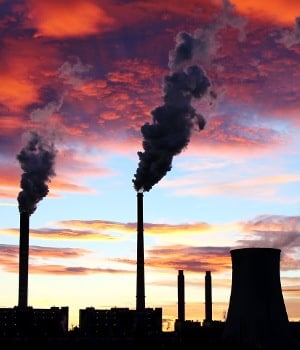
Moses Mahlangu – a wizened, slender man – was not interested in talking much.
“Look,” Mahlangu said, “I arrived in Masakhane [in Mpumalanga] in 1991, when it was just a farm and I was very healthy.”
“I got sick only when I arrived here. I had asthma and my wife too,” Mahlangu said.
Mahlangu and his wife, Catherine, were featured in a 2014 documentary titled the Bliss of Ignorance, commissioned by Friends of the Earth and groundWork, which gave first-hand testimonies of people living in Masakhane near the Duvha Power Station, southeast of Emalahleni.
The couple both suffered from asthma. Some interviewed suffered from other respiratory illnesses.
Mahlangu claimed he was weak, dizzy and could not hold down a full-time job. Catherine died about two years ago.
Now an international study has found that power utility Eskom’s coal-powered electricity stations are emitting 3 200 times more pollution than they should.
Eskom has a concentration of 12 power stations in Mpumalanga’s Highveld region – which is infamous for being a world leader in polluted air.
These emissions cause people living near the power stations to suffer from various respiratory diseases, such as asthma and bronchitis.
Statistics show that polluted air from Eskom’s power stations accounts for 2 200 premature deaths a year.
This costs the country more than R33 billion annually, through hospital admissions and lost working days, coal plant expert Ranajit Sahu found following 21 months of research that ended in December 2017.
Sahu was commissioned by Life After Coal – a joint campaign by green organisations groundWork, Earthlife Africa and the Centre for Environmental Rights (CER).
He said Eskom exceeded emissions despite having been granted lower licence conditions on pollution.
“The exceedances relate to all three regulated pollutants for coal plants, namely sulphur dioxide, oxides of nitrogen and particulate matter, including soot and ash,” Sahu said inhis report.
Plants that emitted the highest pollution were Grootvlei in Balfour, at times as much as 15 times the limit, Kriel, six times the limit, and Duvha and Lethabo, both belching five times the limit.
Last month Eskom applied for the fourth time to be given more time to comply with South African emission minimum standards as determined by the environmental affairs department since 2010.
“From the data, it appears that Eskom treats the limits in its air-quality permits as optional targets. Whatever pollution control they have is not working or is not being made to work,” Sahu said.
“These excessive emissions unarguably contribute towards acute and chronic health impacts. I am surprised that the regulators with the responsibility for responding to exceedances and for ensuring that they don’t recur, are not only not taking any action, but appear not even to be reviewing the emission reports submitted by Eskom.” he said.
In some instances, said Sahu, Eskom provided exact duplicate reports for the same station for multiple months.
In its written response to Sahu’s findings, Eskom said its power stations were monitored and complied with their particulate emissions limits as set in their Atmospheric Emission Licences (AEL). It said it provided monthly reports on station and emission performance to the licencing authorities.
“Eskom stations generally comply with the conditions of their AEL and the stipulated limits, specifically in the period analysed by Sahu. However, Kendal [near Ogies in Mpumalanga] has been operating in noncompliance since the beginning of last year,” Eskom said.
South Africa’s emission minimum standards are multiple times lower than those of other developing countries, such as China, India and Indonesia.
Robyn Hugo, CER’s pollution and climate change head, said violations of air-quality permits were criminal offences under the Air Quality Act.
“On conviction, Eskom, including its directors, could be liable for a R5 million fine and/or five years’ imprisonment per offence. Furthermore, the National Environmental Management Act requires Eskom to take reasonable measures to prevent pollution and to minimise and contain its atmospheric emissions.
“Failure to fulfil this duty of care is also an offence, and Eskom, including its directors, could be liable for a R10 million fine and/or 10 years’ imprisonment,” Hugo said.
TALK TO US
Should Eskom be forced to compensate those people who get ill from emissions?
SMS us on 35697 using the keyword ESKOM and tell us what you think. Include your name and province. SMSes cost R1.50. By participating, you agree to receive occasional marketing material




 Publications
Publications
 Partners
Partners








